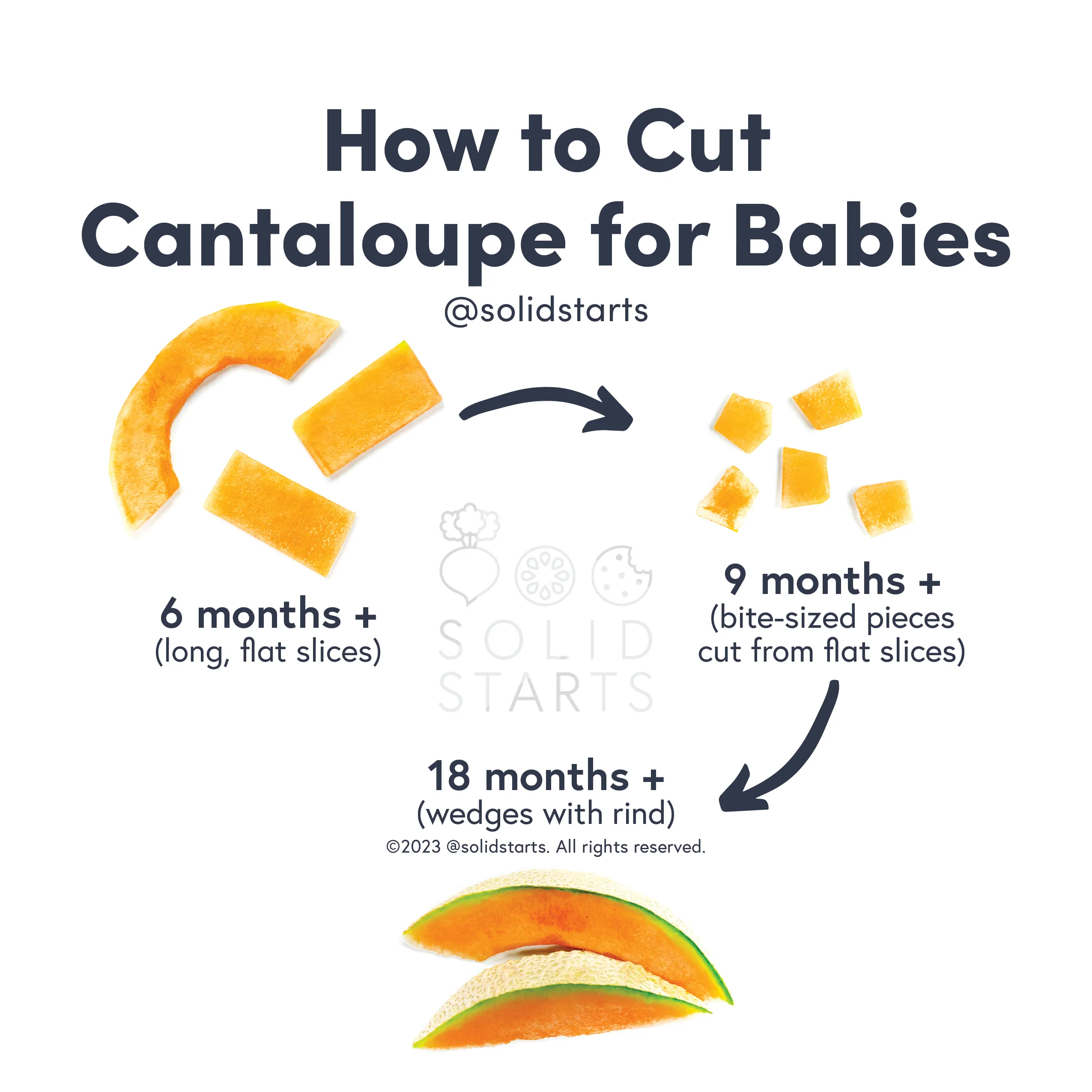Looking for a delicious and nutritious way to introduce your little one to the world of solid foods? Look no further than this delightful "Cantaloupe for Baby Puree and Baby Led Weaning" recipe! Packed with vitamins and a naturally sweet flavor, ripe cantaloupe is the perfect first food for your baby. In just 5 minutes, you can create a smooth puree or chunky bites that will have your baby eagerly reaching for more. Dive into this simple recipe that not only tantalizes tiny taste buds but also supports their developmental journey. Ready to get started? Let’s make mealtime a fun and flavorful adventure!
Prep Time: 5 mins
Cook Time: -
Total Time: 5 mins
Cuisine: American
Serves: 4 servings
Ingredients
- 1 ripe cantaloupe, peeled and chopped
- 1/2 cup water or breast milk
Instructions
- Begin by selecting a ripe cantaloupe. Look for a cantaloupe that is slightly soft to the touch and has a sweet aroma at the stem end, indicating ripeness.
- Using a sharp knife, cut the cantaloupe in half. Scoop out the seeds and discard them.
- With the knife, peel the cantaloupe skin away from the flesh. You can also use a vegetable peeler for this task if preferred.
- Once peeled, chop the cantaloupe flesh into small cubes. Aim for uniform pieces to ensure even blending.
- Place the chopped cantaloupe into a blender or food processor. If you are making a puree, add 1/2 cup of water or breast milk to the blender. This will help achieve a smoother consistency.
- Blend the mixture on high speed until it reaches your desired consistency. For a smoother puree, blend longer. For a chunkier texture suitable for baby-led weaning, blend for a shorter time or pulse a few times.
- Once blended, check the consistency. If it is too thick, you can add a little more water or breast milk and blend again until smooth.
- Transfer the cantaloupe puree into clean, sterilized jars or ice cube trays for storage. If using ice cube trays, freeze the puree in individual portions for easy serving later.
- Allow the puree to cool completely if it has been heated. Store in the refrigerator for up to 3 days or freeze for up to 3 months.
- When ready to serve, thaw the frozen puree in the refrigerator overnight or use a microwave on a low setting. Always check the temperature before feeding it to your baby.
- For baby-led weaning, serve the cantaloupe puree as is or offer small chunks of the fresh cantaloupe for your baby to explore and eat independently.
Tips
- Choose the Right Cantaloupe: When selecting a cantaloupe, look for one that feels slightly soft at the stem end and has a fragrant aroma. This indicates that it’s ripe and sweet, perfect for your baby’s palate.
- Safety First: Always ensure that your kitchen tools are clean and sterilized, especially if you’re preparing food for your baby. This helps prevent any risk of contamination.
- Customize the Consistency: Depending on your baby's age and preference, you can adjust the texture of the puree. For younger babies, blend longer for a smooth puree. For older babies ready for chunkier textures, pulse the blender a few times to leave small pieces.
- Storage Made Easy: If you have leftovers, store the puree in sterilized jars or ice cube trays. Ice cube trays are great for freezing individual portions, making it easy to serve just the right amount.
- Thawing Tips: When it’s time to serve, thaw frozen puree in the refrigerator overnight or use a microwave on a low setting. Always check the temperature before feeding to ensure it’s safe for your baby.
- Explore Baby-Led Weaning: For those opting for baby-led weaning, offer small, soft chunks of fresh cantaloupe alongside the puree. This encourages self-feeding and helps develop fine motor skills.
Nutrition Facts
Calories: 54kcal
Carbohydrates: g
Protein: g
Fat: g
Saturated Fat: g
Cholesterol: 0mg


